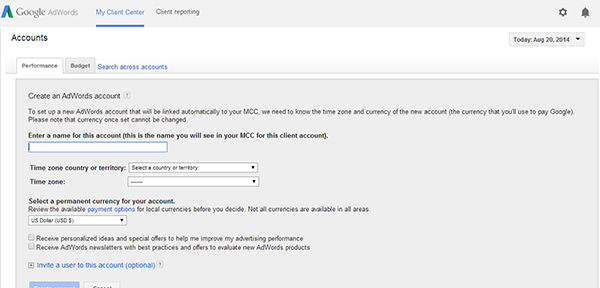Use Paid Search to Soften the Blow of Google Penalties
The list of forbidden techniques and practices that can earn your website a traffic-killing penalty from Google is long indeed, and seems to grow longer with each passing day. Google updates its organic search ranking algorithm an estimated 500 to 600 times a year. While most are minor in nature and basically serve to tweak and adjust a previous update, every so often an update rolls out that rocks the digital community and causes untold thousands of websites to lose both traffic and sales revenue.
Unfortunately your worries don’t end with algorithm updates. Your website might attract the attention of Google and get slapped with a manual penalty. Irritate Google’s powers-that-be hard enough and you might even find your site de-indexed completely.
Set Up Your AdWords Account Ahead of Time
One of the primary benefits of pay per click (PPC) advertising is the speed with which it can start generating traffic to your site. Once a penalty hits, a large portion of your organic traffic and income can literally vanish overnight. By setting up an AdWords account ahead of time, you’ll be able to start replacing your lost traffic and revenue much faster than if you wait until disaster strikes.
- Create and maintain an updated list of your best keywords.
- Determine how many campaigns you will need to cover your various product lines.
- Establish the number of ad groups required.
- Decide on a general layout and an appropriate call-to-action for each ad group’s landing page.
What to do if Your Website has Already Been Hit with a Google Penalty
If your site has suffered a sudden and drastic drop in search rankings, you need to first determine which of two categories your penalty comes under.

- A manual penalty usually comes with a message sent to your Google Webmaster Tools account. These penalties are initiated when Google’s spam algorithm detects something relating to your website that violates Google’s guidelines. Penalties may be applied against either individual pages or to your entire website; in rare instances your site may be removed entirely from Google’s index. To get a manual penalty removed you must file a reconsideration request, which is subject to Google’s approval.
- An algorithmic penalty occurs naturally as the update rolls out, and is not accompanied by any notice from Google. Your first step is to identify which update caused the penalty. The easiest way to do this is to examine your site analytics data and compare the dates when your organic traffic started dropping to the roll-out dates of Google’s algorithm updates. You can find a detailed list of Google’s algorithm updates and the dates they rolled out on at Moz’s Google Algorithm Change History.
Correct the problem once you’ve identified the source of your penalty
In the case of a manual penalty, carefully read the accompanying notice from Google. It will usually spell out what caused the penalty to be applied; your task is to fix whatever needs fixing and document your actions for the reconsideration request.
Algorithmic penalties require a bit of detective work on your part to determine exactly what triggered the penalty. For detailed information on recovering from the Panda or Penguin updates, visit SearchEngineJournal.com and read “The Holy Grail of Panda Recovery – A 1-Year Case Study” and “Penguin 2.0: Your Roadmap to Recovery.”










